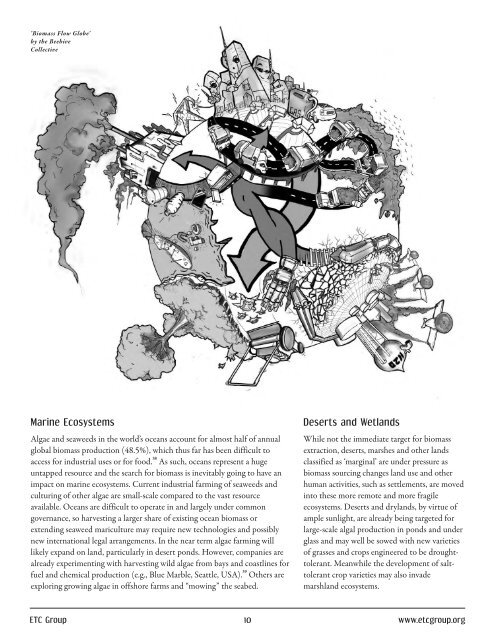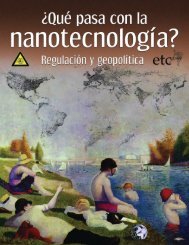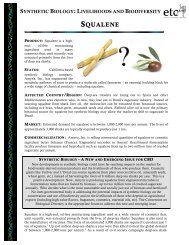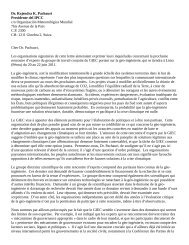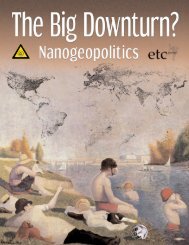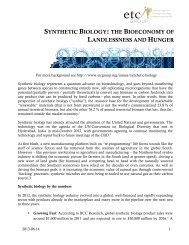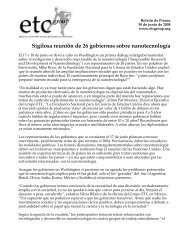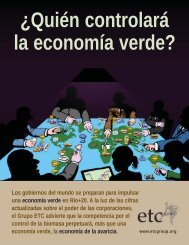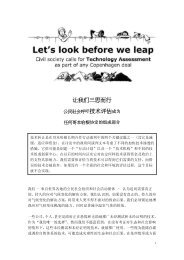The New Biomassters - Convention on Biological Diversity
The New Biomassters - Convention on Biological Diversity
The New Biomassters - Convention on Biological Diversity
Create successful ePaper yourself
Turn your PDF publications into a flip-book with our unique Google optimized e-Paper software.
'Biomass Flow Globe'<br />
by the Beehive<br />
Collective<br />
Marine Ecosystems<br />
Algae and seaweeds in the world’s oceans account for almost half of annual<br />
global biomass producti<strong>on</strong> (48.5%), which thus far has been difficult to<br />
access for industrial uses or for food. 38 As such, oceans represent a huge<br />
untapped resource and the search for biomass is inevitably going to have an<br />
impact <strong>on</strong> marine ecosystems. Current industrial farming of seaweeds and<br />
culturing of other algae are small-scale compared to the vast resource<br />
available. Oceans are difficult to operate in and largely under comm<strong>on</strong><br />
governance, so harvesting a larger share of existing ocean biomass or<br />
extending seaweed mariculture may require new technologies and possibly<br />
new internati<strong>on</strong>al legal arrangements. In the near term algae farming will<br />
likely expand <strong>on</strong> land, particularly in desert p<strong>on</strong>ds. However, companies are<br />
already experimenting with harvesting wild algae from bays and coastlines for<br />
fuel and chemical producti<strong>on</strong> (e.g., Blue Marble, Seattle, USA). 39 Others are<br />
exploring growing algae in offshore farms and “mowing” the seabed.<br />
Deserts and Wetlands<br />
While not the immediate target for biomass<br />
extracti<strong>on</strong>, deserts, marshes and other lands<br />
classified as ‘marginal’ are under pressure as<br />
biomass sourcing changes land use and other<br />
human activities, such as settlements, are moved<br />
into these more remote and more fragile<br />
ecosystems. Deserts and drylands, by virtue of<br />
ample sunlight, are already being targeted for<br />
large-scale algal producti<strong>on</strong> in p<strong>on</strong>ds and under<br />
glass and may well be sowed with new varieties<br />
of grasses and crops engineered to be droughttolerant.<br />
Meanwhile the development of salttolerant<br />
crop varieties may also invade<br />
marshland ecosystems.<br />
ETC Group 10 www.etcgroup.org


